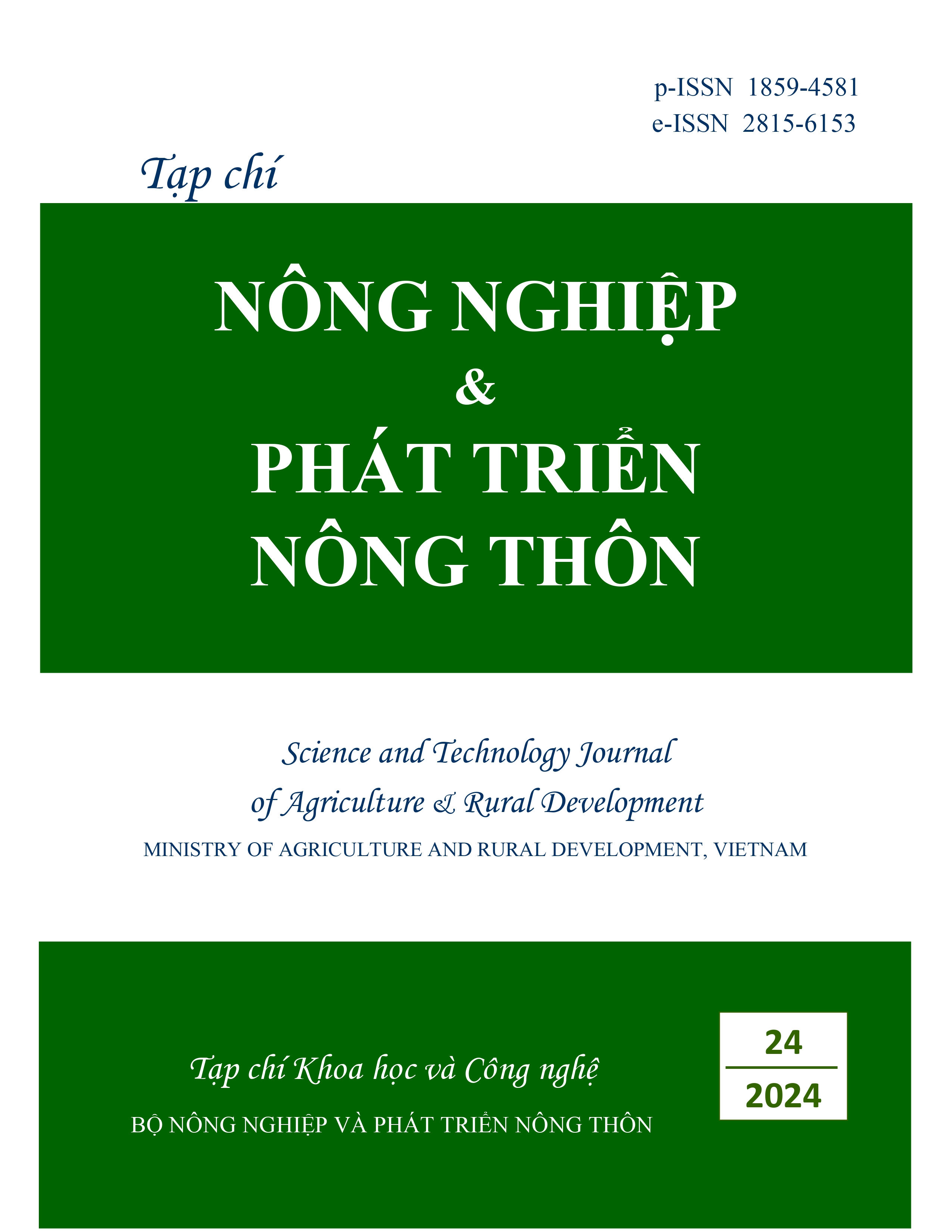Artificial reproduction test of humphead wrasse (Cheilinus undulatus Ruppell, 1835)
DOI:
https://doi.org/10.71254/ra9gx798Keywords:
Humphead wrase, fertilization, egg density, fertility rate, hatching rateAbstract
Forty wild humphead wrasse were collected and reared in 15 m3-ciment tanks with 6 individuals/tank. Fish were fed trash fish and squid with a feeding rate of 5%. Sexually mature fish were selected and spawning inducted using HCG contents of 750 UI/kg in the first time and 1500 UI/kg in the second time for females and 750 UI/kg for males. Eggs were fertilized using dry fertilizing, wet fertilizing and natural methods. The eggs were incubated in densities of 1000 eggs/L, 1500 eggs/L and 2000 eggs/L. The results showed that survival, sexual maturity and spawning rate were 80%, 26.67% and 100%, respectively. Spawning latency time was 10 - 12 hours. The wet fertilizing achieved the highest fertilization, hatching and survival rates of 5DAH-larvae with 33.10 ± 2.63%, 60.33 ± 3.14% and 35.50 ± 1.94%, respectively (p < 0.05). No 5DAH-larvae survived in dry fertilizing while eggs were unhatched in the natural fertilizing method. The density of 1.000 egg/L resulted in a higher hatching and survival rate of 5DAH-larvae with 60.43 ± 3.34% and 35.50 ± 2.02%, respectively, compared to densities of 1500 eggs/L and 2000 eggs/L (p < 0,05). The results requested HCG levels of 750 UI/kg/1st time and 1500 UI/kg/2nd time for females and 750 UI/kg for males, wet fertilizing and density of 1000 egg/L to be optimum for the artificial reproduction of humphead wrasse.






